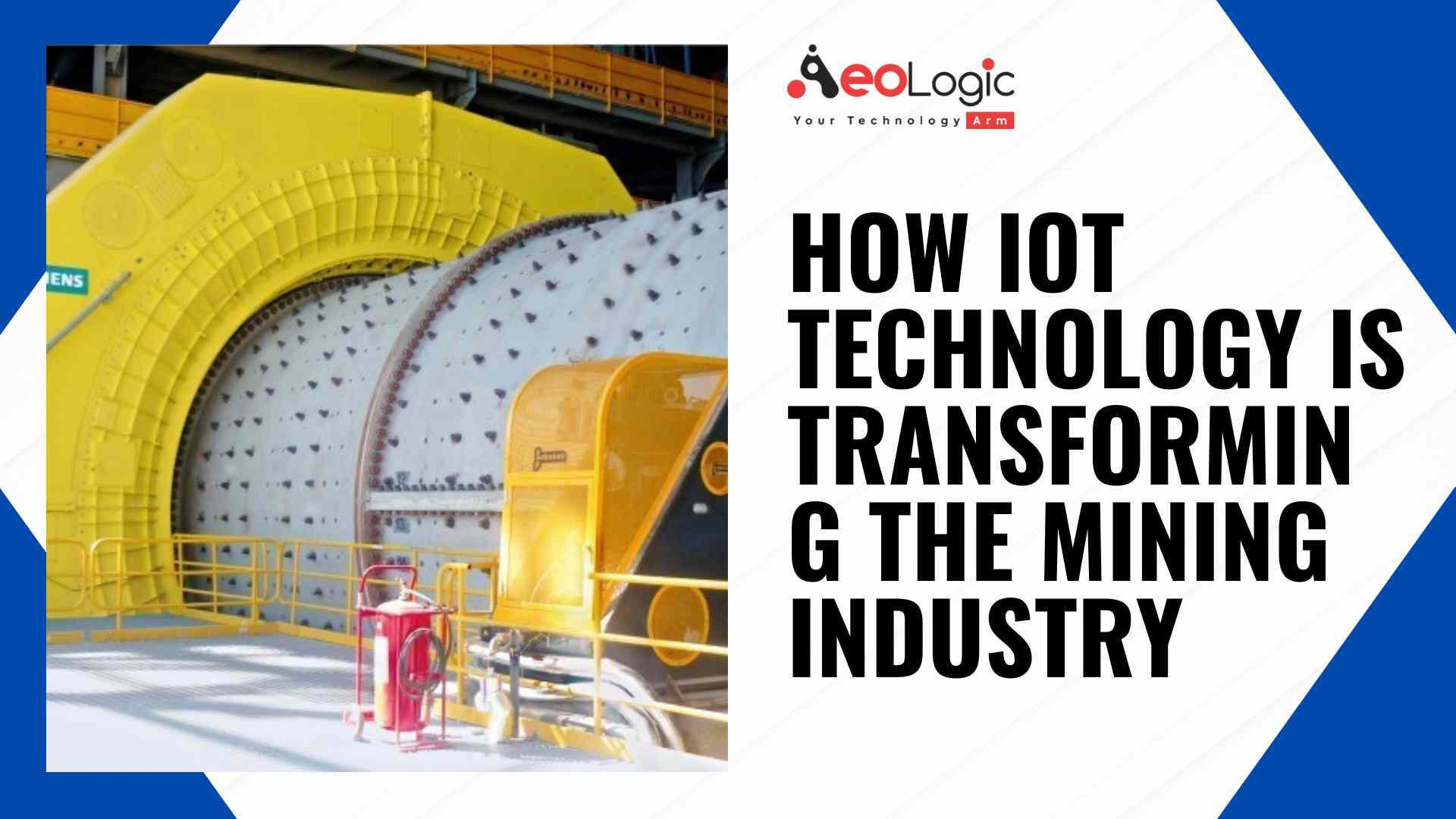The Internet of Things has revolutionized many industries. From healthcare to transportation, the benefits of IoT technology are vast. The mining industry is no exception. In this article, we explore how IoT technology is transforming the mining industry.
A large portion of the mining industry has already been transformed by IoT technology. IoT-enabled equipment can monitor and charge a battery, detect flow rate and pressure, control pumps, and more. This means that mining operations can save time, costs, and money.
Let’s begin!
Overview
The world of mining is a tough one. It’s a dirty, dangerous, and difficult industry to work in. But it also provides jobs for millions of people across the globe and is essential to modern life. You might not think about mining unless you’re a miner yourself or have family members who are miners, but if you do consider this industry important then we’ve got some great news.
IoT (Internet of Things) technology is making it safer, healthier, and more efficient than ever before. In fact, today there are some exciting new developments that will help improve safety within your workplace as well as reduce costs while still improving efficiency.
What is the Internet of Things in the mining industry?
The Internet of Things (IoT) is the extension of Internet connectivity to physical devices and everyday things. These equipment, which are outfitted with electronics, Internet connectivity, and other sorts of technology, may communicate and interact with one another over the industrial Internet while also being remotely monitored and controlled.
IoT is being used in the mining sector to reduce costs and increase efficiency, as well as to improve safety and satisfy artificial intelligence goals.
Also Read: 10 Ways to Use Artificial Intelligence to Improve Business Processes
How IoT Technology is Transforming the Mining Industry
Mining for Modern Life
Mining might not be a topic that comes up in daily conversation for most of us, but it’s a crucial industry we depend on for modern life. While you may not think about your morning cup of coffee or your favorite pair of jeans being the result of an entire continent being carved out by miners, these resources were once dug out by hand and refined into something we use every day and they’re still being extracted today at great expense to both human lives and natural resources.
Mining is an area where technology has been slow to change due to its physical nature: The vast majority of mining takes place underground or undersea (for gold), so new tools must be designed specifically for these environments before they can be used effectively elsewhere.
IoT devices are now able to monitor conditions inside underground tunnels without requiring expensive sensors or diversions from traditional methods such as drilling through rock layers using explosives.
Mining is an industry that requires a lot of physical labor and so has been slow to adopt new technology.
Mining is a very physical job, which means it requires a lot of labor. This can make mining slow to adopt new technology.
In addition, mining has been slow to adopt new technology because it is a very dangerous job. Mining accidents can result in serious injury or death, making employers wary of introducing new equipment and processes that might be more dangerous than those already in use by miners.
Artificial intelligence will also play a role in mining; the U.S. Department of Energy is funding a project at Carnegie Mellon University to develop AI-based systems to monitor and control mining operations.
AI will also play a role in mining. The U.S. Department of Energy is funding a project at Carnegie Mellon University to develop AI-based systems to monitor and control mining operations.
The goal is that these so-called “smart” machines can learn from historical data, improve their performance over time and make decisions on their own—all while humans are left out of the loop (or at least not required). Some examples include:
- Using sensors on equipment or workers’ bodies to detect whether they’re tired, which could help prevent accidents or injuries;
- Using artificial intelligence algorithms that can predict how certain minerals will behave under different conditions;
- Creating models for predicting how oxygen levels change based on weather conditions such as temperature and humidity levels;
The Internet of Things and cloud technology are making it possible for miners to constantly collect data on their equipment, the environment and employees throughout the day.
The Internet of Things (IoT) is a network of physical objects that contain embedded technology to connect, communicate and exchange data with other devices. This can be anything from thermostats in your home to cars on the road; it’s all part of an IoT ecosystem that allows us to monitor our environment and improve quality of life through connected monitoring technologies.
The mining industry is one area where IoT has already had a significant impact by making it possible for miners to constantly collect data on their equipment, the environment and employees throughout the day.
Also Read: The Role of AI in Education And Learning: Just Promises Or Revolution
Data can be analyzed in real time instead of having to wait until the end of the day or week when workers can review paper logs.
The mining industry is a fast-paced one, so it’s important that data can be analyzed in real time as opposed to waiting until the end of the day or week when workers can review paper logs. By capturing data in real time, miners can respond immediately to problems and work more efficiently and safely.
A common example of this is when there are issues with equipment that needs maintenance or repair; rather than having to wait until those repairs have been made before they’re able to resume production, IoT technology allows you to collect information about what happened during these incidents so that you know exactly what happened and why it happened—and then address it immediately instead of waiting until after hours when your employees might not be available for answers!
IoT helps improve safety by providing better communication between workers if they get separated or have an emergency.
IoT technology provides a more efficient way for workers to communicate with each other and their supervisors. This can be done through a variety of different mediums, including text messages, voice calls and video chats. The ability to talk face-to-face allows for greater insight into what’s going on at the mine site and how it impacts your team members’ safety.
Additionally, IoT technology allows you to monitor the status of equipment remotely—and even send alerts when something goes wrong so that you’re alerted immediately before problems become dangerous or costly. Using this information will allow you to make informed decisions on how best handle situations like an overcrowded lift shaft or an unexpected power outage in one area while another part remains unaffected by these issues yet still vulnerable because they rely on electricity from elsewhere.”
Smart technology also allows workers to communicate with equipment as well as each other, helping them work more efficiently and safely.
In addition to being more efficient, smart technology allows workers to communicate with equipment as well as each other, helping them work more efficiently and safely. For example, if a miner discovers that a rock is unstable or has a weak point during excavation, they can send an alert via text message or voice command so that others in the field can take appropriate action. This reduces downtime while also improving safety for miners and the environment around them. It’s also easier for regulators to monitor compliance with regulations when they have access to real-time data on what happens in the field at any given moment—making sure everything is working properly before anything goes wrong!
IoT also helps companies comply with environmental regulations by collecting data about wind speed and direction, air quality and pollutants emitted from equipment.
IoT also helps companies comply with environmental regulations by collecting data about wind speed and direction, air quality and pollutants emitted from equipment. The technology can help them take readings frequently to quickly notify authorities if there’s a serious problem.
The mining industry has been at the forefront of using IoT technology in recent years because it offers numerous benefits for both workers and business owners alike. For example, miners who operate heavy machinery need constant access to accurate information about their environment so they can make safe decisions while working underground or on-site at other locations (e.g., construction sites).
Automated systems take readings frequently so companies can quickly notify authorities if there’s a serious problem.
With IoT technology, you can use data to monitor the environment and provide real-time information to the company. The collected data is then analyzed in order to identify problems or opportunities for improvement. This process allows companies to make decisions quickly so they can take appropriate action before things get out of hand.
Some examples of how IoT technology is being used by miners include:
- Automatic systems take readings frequently so companies can quickly notify authorities if there’s a serious problem at their mines (such as an explosion). If someone doesn’t respond on time, it could cost lives.
Also Read: Why Is CRM Software a Game-changer When It Comes to Delivering Better Customer Experiences?
Technology like IoT is helping make mining safer, healthier and more efficient than ever before
IoT technology is helping the mining industry become more efficient, safer and healthier than ever before.
- By using IoT, companies can increase their efficiency in a number of ways. For example, they can monitor the health of their workers by tracking data such as heart rate and breathing rate through wearables like smartwatches or fitness trackers. This information can be used to identify potential issues that could lead to accidents or illness so that they can be addressed before they become serious problems.
- The same technology also helps companies comply with environmental regulations while they work underground (e.g., reducing carbon emissions). All this means less need for manual labor—and therefore less risk for injury—as well as increased safety for employees who may not know how much pressure there actually is inside the mine shafts until after an accident occurs.
What are the Current Mining Sector Trends?
Given the benefits that IoT brings to the forefront, it is understandable that many mining firms have boosted their investment after using IoT-enabled solutions in their operations.
According to market data, mining businesses saved an average of 1.76% on costs in 2018 showing that cost optimization is a significant benefit of mining automation. This is predicted to climb to 16.02% in 2023. This outstanding ROI is the result of years of integrating IoT technology in mining.
Conclusion
We can’t wait to see what else IoT technology will bring to mining in the future. From cutting down on human error, reducing costs and improving safety, it looks like IoT will be a key part of our future economy.
Are you looking to implement technology into your business? If yes, so, please feel free to contact us at support@aeologic.com
Also see: Our RFID Solutions
Related Blogs:
- How AI/ML Can Change the Public Transportation Industry
- Transforming Business With Digital Technology in the Oil Palm Industry in India
- Importance of Digital Asset Management in the Retail Industry
- How AI is Transforming the Agriculture Industry
- 10 Ways to Use Artificial Intelligence to Improve Business Processes
- The Future of IoT Technology in Convenience Stores
- Building Manufacturing Resilience Through AI and ML

I’m Deepika Pandey, an SEO strategist and content writer with 6+ years of experience. I create SEO-friendly content that drives traffic and engages readers. I combine data insights with creativity to help businesses grow their online presence effectively.






